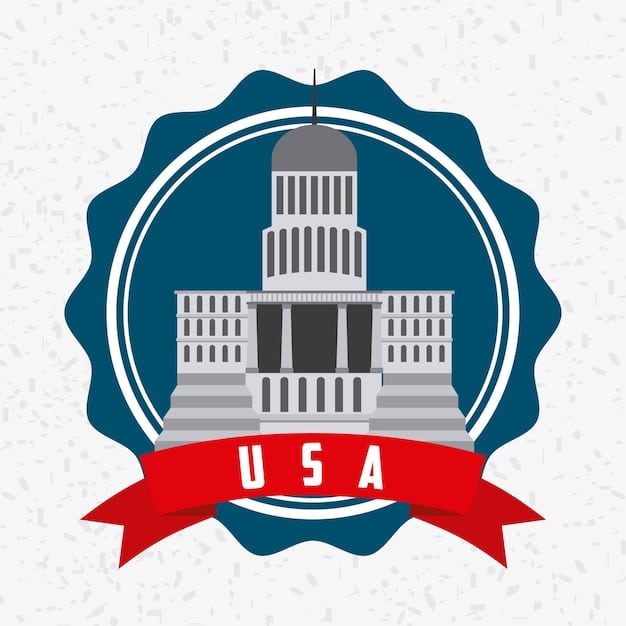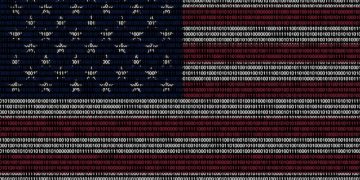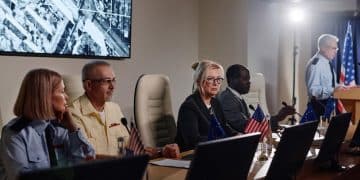How the US Government Tackles Disinformation Threats

The US government is addressing the growing threat of disinformation through a multi-faceted approach that includes legislative measures, public awareness campaigns, and collaboration with technology companies to identify and counter false narratives.
The spread of disinformation poses a significant threat to national security and democratic processes in the United States. Understanding how the US government is addressing the growing threat of disinformation is crucial for every citizen as this issue evolves.
Understanding the Disinformation Threat
The rise of digital media has made it easier than ever for false or misleading information to spread rapidly and widely. Disinformation, which is deliberately false or inaccurate information spread with the intent to deceive, can manipulate public opinion, incite violence, and undermine trust in institutions.
The US government is increasingly concerned about the origins and effects of disinformation, leading to a variety of initiatives aimed at identifying and neutralizing these threats. These efforts are crucial in safeguarding the democratic process and national security.
Defining Disinformation and Its Impact
Disinformation is not simply misinformation, which can be unintentionally inaccurate. Disinformation is crafted and spread with malicious intent. Its impact can range from influencing elections to causing social unrest.
Sources and Methods of Disinformation
Disinformation can originate from a variety of sources, including state-sponsored actors, extremist groups, and individual malicious actors. Methods range from traditional media manipulation to sophisticated social media campaigns and the use of deepfake technologies.
- State-sponsored actors: Foreign entities may use disinformation to meddle in US elections or sow discord.
- Extremist groups: Domestic groups may spread disinformation to incite violence or recruit new members.
- Social media campaigns: Coordinated efforts to spread false narratives through social media platforms.
- Deepfake technologies: Creating realistic but false videos or audio recordings to deceive the public.

In conclusion, understanding the nature, sources, and methods of disinformation is the first step the US government takes and is critical for crafting effective countermeasures and protecting society from its harmful effects.
Legislative Measures to Combat Disinformation
The US government has taken several legislative steps to combat the spread of disinformation, reflecting a recognition of the serious threat this poses to national security and democratic values. These measures span different areas of lawmaking and regulatory oversight.
Understanding these legislative efforts provides insights into how the government is addressing the challenge through legal frameworks and regulatory mechanisms. They also illustrate the ongoing debate about balancing national security with freedom of speech.
Key Legislation and Laws
Various legislative efforts have been proposed and enacted to counter disinformation. These laws aim to address different aspects of the problem, from foreign interference in elections to the spread of false narratives online.
Challenges and Controversies
Legislative measures can face challenges related to the First Amendment and concerns about government overreach. It’s important to debate and find common ground to allow for a better solution to protecting free speech while curtailing disinformation.
- First Amendment protections: Balancing efforts to counter disinformation with the constitutional right to freedom of speech.
- Government overreach: Concerns that anti-disinformation measures could be used to suppress legitimate dissent.
- Defining disinformation: The difficulty of creating a legal definition of disinformation that is not overly broad or vague.
- Enforcement challenges: The practical challenges of enforcing anti-disinformation laws on a global internet.
Effectively addressing falsehoods through legislation requires careful consideration of the balance between protecting free speech and maintaining safety and security for all citizens.
Government Agencies Involved in Countering Disinformation
Several US government agencies play a crucial role in countering disinformation, each bringing its unique expertise and resources to address this complex challenge. These agencies work both independently and collaboratively to identify, track, and neutralize disinformation threats.
By understanding the roles and responsibilities of these agencies, the public can better appreciate the comprehensive approach the government is taking to maintain clarity and integrity in public discourse.
Department of Homeland Security (DHS)
DHS is at the frontline of defense against disinformation, focusing on protecting critical infrastructure and ensuring an informed public.
Cybersecurity and Infrastructure Security Agency (CISA)
CISA works to defend civilian governmental institutions from cyberattacks, including those meant to spread disinformation. They coordinate with all levels of government and with private sector organizations to improve response capabilities.

Many agencies support cybersecurity issues to make sure threats are discovered and neutralized.
Public Awareness Campaigns and Education
Recognizing that combating disinformation also requires an informed and discerning public, the US government has invested in public awareness campaigns and educational initiatives. These programs aim to equip citizens with the skills and knowledge to identify and resist disinformation.
By promoting media literacy and critical thinking, these campaigns seek to strengthen societal resilience against the harmful effects of false narratives. These initiatives also seek to boost community resilience.
Media Literacy Programs
These programs are designed to teach individuals how to critically assess information they encounter online and in traditional media.
Government-Sponsored Campaigns
The government has launched several public awareness campaigns to highlight the dangers of disinformation and provide tips for identifying it.
- “Think Before You Share”: A campaign encouraging people to verify information before sharing it on social media.
- “Rumor Control”: Government websites and social media channels dedicated to debunking false rumors and conspiracy theories.
- “Fact vs. Fiction”: Educational materials that teach people how to distinguish between factual reporting and biased or false information.
Public awareness is essential to creating informed conversations that enable society to discern fact from fiction.
Collaboration with Technology Companies
Recognizing that technology companies play a vital role in the spread of disinformation, the US government has sought to collaborate with these companies to address the problem. This collaboration involves sharing information, developing technological solutions, and promoting responsible content moderation practices.
The partnerships between the government and tech companies represent a critical component of a multi-faceted approach to countering disinformation and it holds these companies to a higher standard of integrity.
Information Sharing and Threat Detection
The government shares intelligence and threat information with technology companies to help them identify and remove sources of disinformation from their platforms. This helps to identify and target sources of disinformation.
Content Moderation and Platform Policies
The government encourages technology companies to develop and enforce policies that prohibit the spread of disinformation on their platforms. Content moderation is a key component. Tech companies must actively manage content to ensure that disinformation is removed.
This ensures a collaborative and responsible web ecosystem that benefits everyone.
International Cooperation and Diplomacy
Since disinformation can originate from anywhere in the world, the US government works closely with international allies to address this global challenge. This collaboration involves sharing best practices, coordinating responses to disinformation campaigns, and promoting media freedom worldwide.
By working together, nations can better protect themselves against cross-border disinformation threats and promote democratic values on a global scale. It is important to recognize that threats come from national and international level.
Sharing Best Practices and Strategies
The US shares its experiences and strategies for countering disinformation with other countries, and in turn, learns from their efforts. This includes joint research initiatives, training programs, and policy consultations.
Diplomatic Efforts to Promote Media Freedom
The US uses its diplomatic influence to advocate for media freedom and protect journalists from harassment and violence around the world. This includes supporting investigative journalism, promoting media literacy, and condemning censorship and disinformation.
- Supporting independent media: Providing funding and resources to independent media outlets in countries where press freedom is restricted.
- Combating censorship: Publicly condemning government censorship and working to promote access to information online.
- Promoting media literacy: Supporting programs that teach people how to critically evaluate information and identify disinformation.
This international cooperation makes sure that we have a comprehensive approach to addressing the multifaceted problems of disinformation as they evolve.
| Key Point | Brief Description |
|---|---|
| 🛡️ Legislative Measures | Laws and regulations to combat disinformation. |
| 🤝 Tech Collaboration | Partnerships with tech companies to detect and remove disinformation. |
| 📚 Public Awareness | Campaigns promoting media literacy and critical thinking. |
| 🌍 International Cooperation | Collaborative efforts with global allies to counter disinformation. |
FAQ
▼
Disinformation is deliberately false or inaccurate information spread intentionally to deceive or mislead. It differs from misinformation, which is unintentionally inaccurate.
▼
Key agencies include the Department of Homeland Security (DHS), the Cybersecurity and Infrastructure Security Agency (CISA), the State Department, and the FBI.
▼
The government shares threat information with tech companies to detect and remove disinformation, and promotes responsible content moderation policies on their platforms.
▼
Media literacy programs are educational initiatives designed to teach individuals how to critically assess information they encounter online and in traditional media.
▼
International cooperation allows countries to share best practices, coordinate responses to disinformation campaigns, and promote media freedom globally to counter cross-border threats.
Conclusion
In conclusion, the US government is employing a comprehensive strategy to combat how the US government is addressing the growing threat of disinformation, combining legislative measures, agency coordination, public awareness campaigns, collaboration with technology companies, and international cooperation to protect national security and democratic processes.





